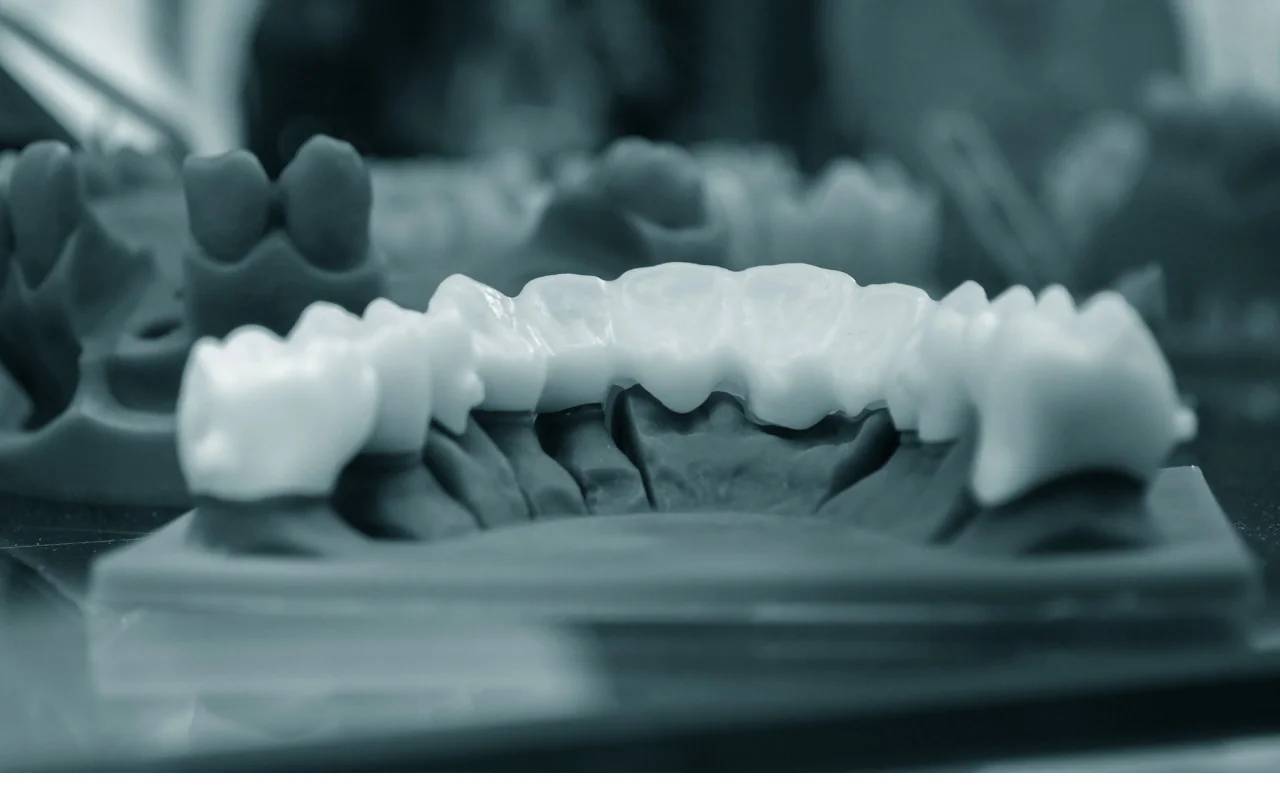Welcome to the future of dentistry, where technology takes center stage and revolutionizes the way we restore smiles. Gone are the days of guesswork and tedious manual processes; enter the era of 3D modelling and artificial intelligence (AI). Restorative dentistry has reached new heights, thanks to these cutting-edge advancements that provide precision, efficiency, and incredible results.
In this blog post, we will explore how AI is transforming restorative dentistry through 3D modelling. From its role in revolutionizing the dental industry to the numerous benefits it offers both practitioners and patients alike, get ready to be amazed by what modern technology can achieve! So buckle up – single tooth restoration is only the beginning as social media enables dental innovations to go global instantly.
The Role of Technology in Dentistry
Technology has become an indispensable part of dentistry, transforming the way oral health is assessed and treated. With each passing day, new advancements are reshaping the landscape of dental practices worldwide. Whether it’s digital imaging systems, CAD/CAM technology, or laser dentistry, technology continues to revolutionize every aspect of the industry.
One significant role that technology plays in dentistry is improving diagnostic capabilities. Digital radiography enables dentists to capture high-resolution images instantly and with reduced radiation exposure for patients. This allows for more accurate diagnoses and treatment planning.
Moreover, technology has made treatments faster and more efficient than ever before. For instance, the development of chairside CAD/CAM systems empowers dentists to create custom restorations on-site within a single visit. This eliminates the need for cumbersome impressions and multiple appointments while delivering precise results.
Additionally, innovative technologies have enhanced patient communication and engagement. Advanced software programs enable practitioners to create interactive treatment plans that patients can visualize in 3D models or simulations. This not only helps them understand their oral health condition better but also increases their confidence in undergoing recommended procedures.
Furthermore, technological advancements contribute to improved record-keeping and streamlined administrative processes in dental practices. Electronic health records (EHRs) eliminate paper-based documentation while ensuring secure storage and easy access to patient information when needed.
Technology plays a pivotal role in modern dentistry by enhancing diagnostics, expediting treatments, improving patient communication, and streamlining practice management tasks like record-keeping. As dental professionals continue to embrace these innovative tools and techniques – single tooth restoration is just the beginning! The possibilities for advancing restorative dentistry through technology are infinite.
What is 3D Modelling?
3D modelling is a revolutionary technology that has transformed various industries, including dentistry. It involves the creation of digital three-dimensional models using computer software. In the context of restorative dentistry, 3D modelling allows dentists to plan and design dental restorations with unparalleled precision.
Using advanced imaging techniques such as cone beam computed tomography (CBCT) scans, dentists can capture highly detailed images of patients’ teeth and mouth structures. These images are then used to create virtual replicas of the patient’s oral cavity, which can be manipulated and modified in a digital environment.
With 3D modelling, dentists can accurately assess the extent of dental damage or decay and plan appropriate treatments. They can visualize how different restorative options will look and fit within the patient’s mouth before any physical work is done. This not only saves time but also reduces potential errors or complications during treatment.
Moreover, 3D modelling enables dentists to collaborate with dental laboratories more effectively. The digital models can be shared electronically, allowing technicians to create custom-made prosthetics or appliances with a high level of accuracy.
The advent of 3D modelling in restorative dentistry has revolutionized the way dental treatments are planned and executed. With its ability to provide precise measurements, realistic visualizations, and enhanced collaboration opportunities between professionals, it has become an invaluable tool for achieving optimal outcomes in single tooth restoration procedures – just one example among many other applications within this evolving field! And thanks to social media platforms enabling instant global communication today’s innovations reach practitioners worldwide almost instantly!
Benefits of AI in Restorative Dentistry
AI, or artificial intelligence, has made significant advancements in various industries, and dentistry is no exception. When it comes to restorative dentistry, AI offers numerous benefits that can revolutionize the way dental procedures are performed.
One of the key advantages of using AI in restorative dentistry is its ability to assist with 3D modeling. By utilizing sophisticated algorithms and machine learning techniques, AI can analyze patient data and create highly accurate 3D models of teeth and oral structures. This not only improves treatment planning but also enables dentists to visualize the final result before performing any procedures.
Another benefit is improved precision and efficiency. With AI-powered tools, dentists can achieve precise measurements for single tooth restoration procedures. This ensures a better fit for dental crowns or implants, resulting in enhanced aesthetics and functionality for patients.
AI’s ability to analyze large datasets also plays a crucial role in diagnosis and treatment planning. By examining past cases with similar characteristics as the patient’s condition, AI algorithms can provide valuable insights to help dentists make informed decisions about the best course of action.
Furthermore, AI brings automation into restorative dentistry workflows by streamlining administrative tasks such as appointment scheduling and record-keeping. This frees up time for dental professionals to focus on providing quality care to their patients.
In addition to these practical benefits, integrating AI into restorative dentistry opens up new possibilities for research collaboration across borders. As social media enables dental innovations to go global instantly, researchers from different parts of the world can collaborate more effectively by sharing their findings through online platforms powered by AI technology.
How AI is Revolutionizing the Dental Industry
As we have seen throughout this article, the integration of artificial intelligence and 3D modeling in restorative dentistry has brought about significant advancements and improvements. From enhancing accuracy and precision to reducing treatment time and costs, AI has revolutionized the dental industry.
Single tooth restoration is only the beginning when it comes to utilizing AI in restorative dentistry. As technology continues to evolve, we can expect even more innovative solutions that will benefit both patients and dental professionals alike. The potential for social media-enabled dental innovations to go global instantly further expands opportunities for collaboration and knowledge sharing among experts around the world.
Through AI-powered algorithms, practitioners can now analyze vast amounts of data quickly, helping them make informed decisions about treatment plans. This not only improves patient outcomes but also allows for personalized care based on individual needs.
Additionally, by using 3D modeling techniques supported by AI technology, clinicians can simulate various scenarios before performing any actual procedures. This virtual planning process enables a more predictable outcome while minimizing errors or complications during treatments.
Moreover, with improved efficiency in design and fabrication processes through automated workflows enabled by AI tools, dental laboratories are able to produce high-quality restorations with greater speed and accuracy than ever before.
It’s clear that artificial intelligence is transforming how dentistry is practiced today. By harnessing its power in combination with 3D modeling techniques, we can achieve unprecedented levels of precision, efficiency, and patient satisfaction.
Restorative dentistry has come a long way thanks to advancements like these. With ongoing research and development efforts focused on refining AI algorithms paired with 3D models even further, there’s no doubt that this technological integration will continue pushing boundaries within the field of dentistry well into the future.
Embracing artificial intelligence as part of restorative dentistry offers immense potential for improving patient care while empowering dental professionals worldwide through enhanced capabilities and collaboration. The future of dentistry is here, and it’s exciting to see the possibilities it holds for transforming the industry for the better.









